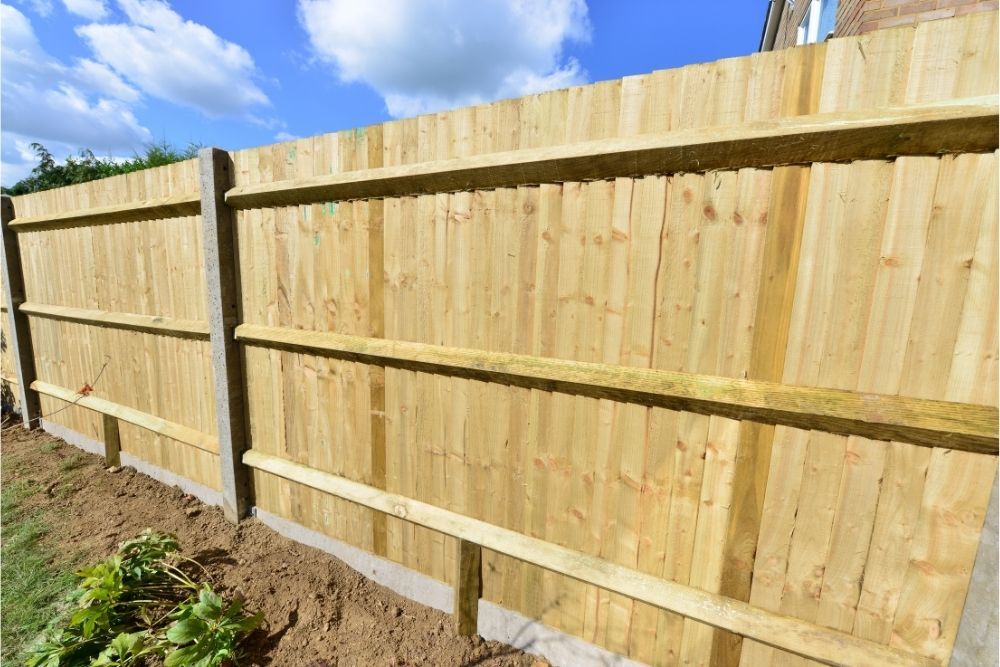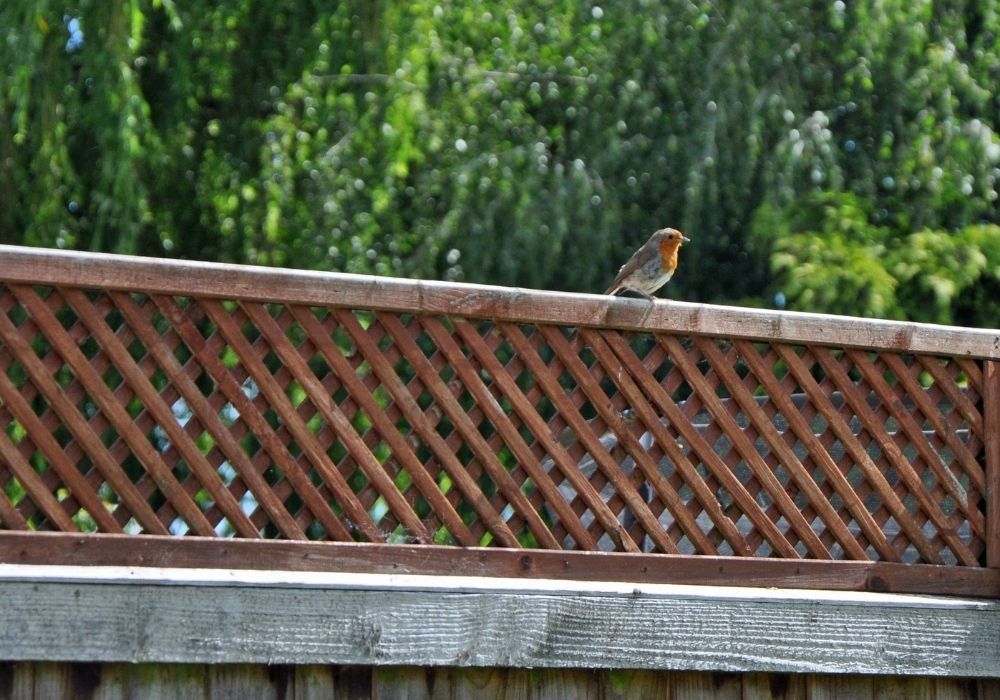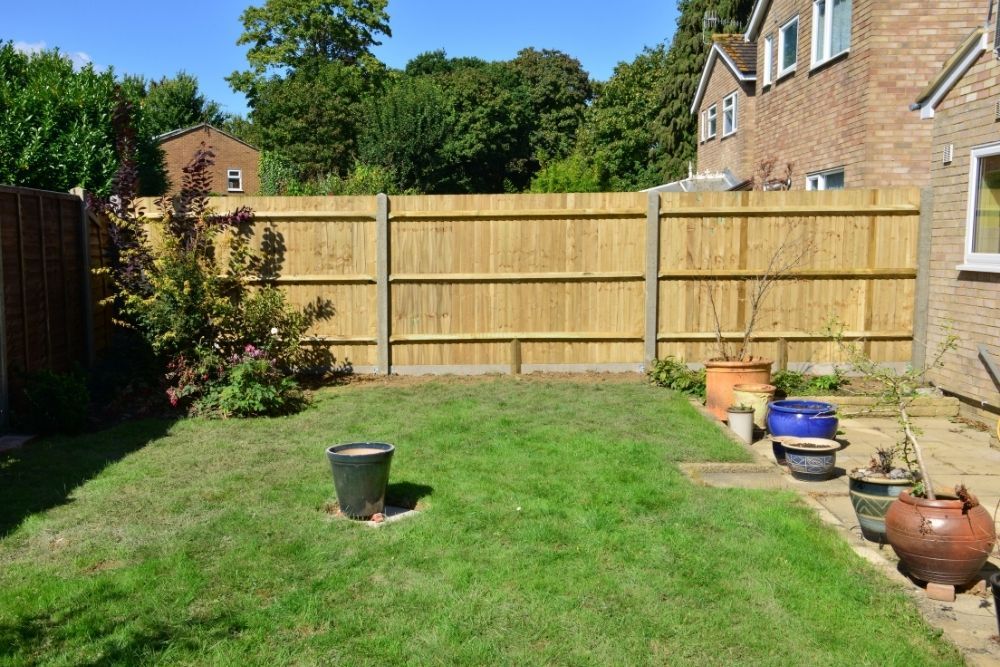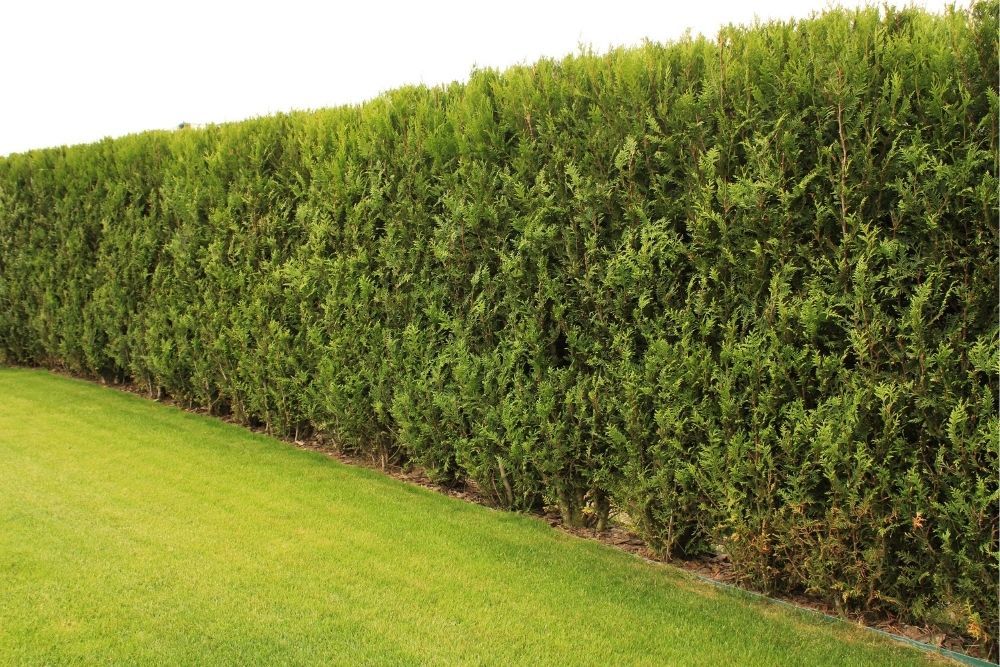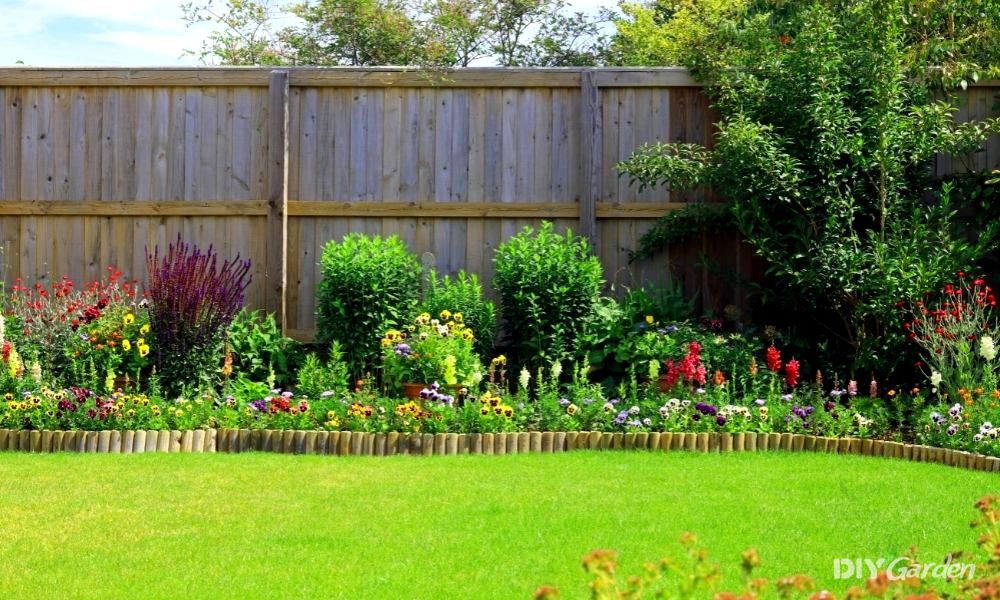
Fences are a garden necessity from keeping the dog in to keeping strangers out, you need a safe and secure fence around your property.
But what if you have really nosy neighbours or a hot garden that could do with more shade – how tall can a fence be?
It’s tempting to get the tallest fence possible, but there are rules and regulations you don’t want to run foul of because fencing is expensive. Being told by the council to pull your fencing down is not an attractive prospect.
How High Can a Fence Be in the UK?
Fencing Height Regulations
Just like recycling rules, allowed fence heights differ depending on the rules of your local authority.
However, the rule of thumb for walls and fences in a back garden is a maximum of 2 metres (that’s 6.5 ft in old money). Double-check your council doesn’t have a different set up though.
You should also be aware that the council can enforce on too high fences up to four years after they’re installed. If you go taller than the legally allowed height, it could catch up with you down the line.
What About the Front Garden?
Ah – that’s different.
For a front garden the maximum height is usually half the height of the back garden, so 1 metre or 3.2 feet.
This is because there’s a rule relating to the highway. If the fence line boundary is adjacent to a road or pavement the maximum fence height without planning permission is 1 metre.
If you want to erect a fence higher than 1 metre in your front garden, you’ll need planning permission. You’ll need that permission for anything over 2 metres in the back as well.
If you live in a conservation zone there will be more rules and regulations. There’s no point fighting them!
Fence Panels Maximum Height
Most companies are aware of these regulations, so fence panels aren’t usually sold bigger than 2 metres unless they’re specially commissioned.
What About Fence Toppers? How High Can They Be?
Fence toppers are popular. They are decorative and let in light while still providing some privacy. A trellis topper is a great way to grow jasmine and runner beans too!
If your neighbour isn’t too keen on 2 metres of solid wood blocking out their sun, a topper is a softer installation that might keep them on your side.
However!
Fencing height regulations are inclusive of toppers – so a topper can’t be added to a 2-metre-high fence panel. If you want to add a topper to a 2-metre-high fence panel you need planning permission.
But wait – before you touch that fence are you sure it’s yours?
Who’s Fence is Who’s?
Don’t remove or add things to a fence, or even build an entirely new fence, until you’re sure it’s your boundary. Is that actually your fence?
It’ll be highlighted on the deeds to the property. Historically, the fence to your left as you look onto the garden belongs to your neighbour, but this is not always the case.
Keeping Your Neighbour Sweet
To avoid arguments and bad feelings it’s best to talk to your neighbour before altering a fence. There could be many reasons why they don’t want it dramatically changed.
Such as:
- The current fence has plants, birdhouses, or garden art attached
- They have pets – dogs, cats, rabbits that need to be kept in
- Security issues
- A high fence will impact their light level
A chat over coffee is the best way forward. Try to accommodate their needs, such as giving plenty of notice so they can make arrangements for the dog. If neither of you can figure out who owns the fence, splitting the cost is an option.
Something to bear in mind is that height is calculated from your garden. This means if you’re on a hill, a 2 metre fence can tower over your neighbour’s lower-lying property.
That could cause a dispute in which the council has to get involved no matter how well you know one another.
Mind The Wind!
You might be tempted to go for the uppermost fence height limit, but bear in mind that the higher you go, the stronger the winds you will encounter.
It’s pretty common to see fence panels blown down after a winter storm and they’re a pain to fix.
If you choose 6ft high fence panels you will need 8ft fence posts that give enough strength to stop the panels from blowing down.
The posts should be set 2ft into the ground, leaving 6ft above ground for panels. Concrete posts are best because wooden ones quickly rot and snap.
Either way, use concrete to set them in place and ensure it’s dried before attaching any panels. It’s at least a two-day job.
What About Hedges?
Hedges are interesting because specific height limits exist for fence panels, but not for hedging. There are no laws that state how high your hedge can be.
However, the law does state that your hedge can’t have an adverse effect on your neighbours. Blocking out their light for example will end up with a call from the council telling you to cut the hedge or they will do so.
If you’re looking to raise a back garden fence that’s taller than 2 metres you could potentially use trees for added height.
Pleached trees for example add extra height without planning permission and are usually seen as an attractive element to a garden. Neighbours might welcome the free privacy and gentle dappled light.
Even so, it’s best to speak to your neighbour first!
Fence Height Limits – A Quick Reference
- In the UK the usual maximum height for a back garden fence is 2 metres
- In the front garden or for a fence adjoining highways it’s 1 metre
- Conservation areas have their own rules
- You might be able to use pleached trees to gain height over 2 metres
- Always check your local authority regulations
- Double check that fence actually belongs to you!
- Consider your neighbours
Adding height to a fence, or erecting a fence where there wasn’t one before, is a big cause of council complaints each year.
It’s important to follow the rules and keep your neighbours on side.
